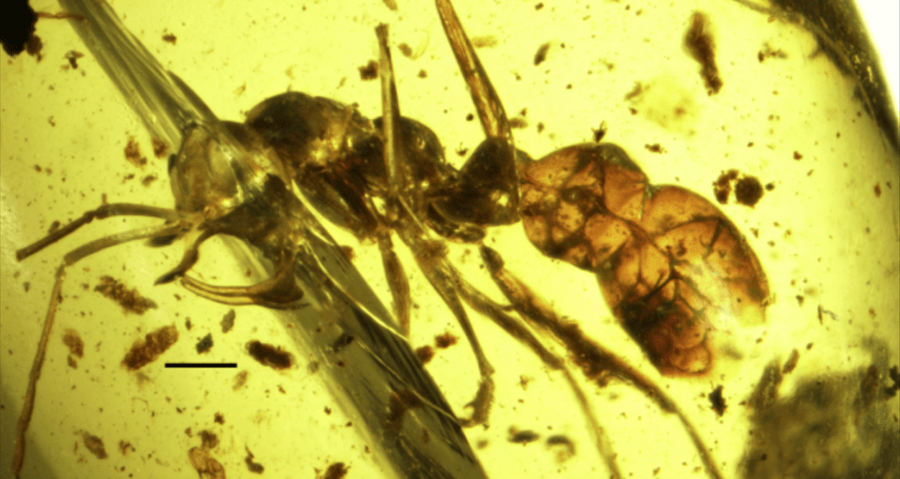2 BILLION Year Old NUCLEAR REACTOR Discovered in Africa
/It is widely believed that the origin of earth was around 4.6 billion years ago, then about a billion years later life started to form. From there multicellular life evolved and then eventually modern humans started to populate the planet over 200,000 years ago. If you’re wondering where the 4.6 billion came from, scientists arrived at the number by finding the oldest piece of the planet they can, then figuring out how old that piece is. Of course this involves actually finding the oldest piece of the planet which is no simple matter because the Earth is always breaking down rocks into magma and then pushing it back up to the surface.
So what if we consider for a minute that our dating technique is not foolproof, maybe we didn’t find the oldest piece of the planet or perhaps radiocarbon dating isn’t as reliable as we think and what if the earth is much...MUCH older than we thought.
If you look around, there are clues found all around the world from the Great Pyramids of Egypt to the Sacsayhuaman ruins in Peru that point to the possibility that advanced prehistoric civilizations may have existed on this planet tens of thousands or even millions of years ago and in this article we will talk about one of the most intriguing finds, an ancient nuclear reactor.
In May of 1972 workers at a nuclear fuel processing plant in France found that ore sourced from a mine in the Oklo deposit in Gabon that was formed over 2 billion years ago had over 440 pounds of uranium 235 that appeared to be missing. This was scary because that much uranium could make at least 6 nuclear bombs.
After scratching their head for weeks, researchers at the French Atomic Energy Commission (CEA) came to the conclusion that the missing uranium must have gone through a nuclear fission and split into other atoms which was extremely unlikely as this would require some very specific conditions.
The first being the size of the uranium deposit needs to exceed the length that fission-inducing neutrons travel. The second is that there needs to be a lot of uranium 235. Thirdly, there needs to be a substance that can slow the neutrons that is released when uranium nucleus splits and finally there can’t be too much boron, lithium or anything else that absorb neutrons.
Although this seems highly unlikely to occur naturally, the conclusion was that...well, it just did. Because there was really no other possible explanations for it.
An Alternative Theory
Scientists who were sent to investigate the site concluded that This nuclear reactor came into being 1.8 billion years ago, and was operational for about 500 thousand years. The results of the research were made public at a conference of the International Atomic Energy Agency and although many labeled the finding “wondrous” but “naturally occurring,” others concluded that this setup could not have occurred naturally, and therefore must have been man-made.
The case for the reactor not formed “naturally” was made by researchers who found enriched minerals at the site which would indicate that the reaction was produced and water was also found to have been used to moderate the reaction.
These findings were puzzling because it is not possible for natural uranium to go critical, except under very special circumstances such as the presence of graphite or heavy water as a moderator, neither of which could reasonably be expected to have been present in the vicinity of Oklo.
In his book Secrets of the Lost Races, author Rene Noorbergen says: "Following the publication of Dr. Perrin's report by the French Academy of Sciences, however, questions concerning his conclusions were raised by many experts. Glenn T. Seaborg, former head of the United States Atomic Energy Commission and Nobel prize winner for his work in the synthesis of heavy elements, pointed out that for uranium to "burn" in a reaction, conditions must be exactly right. This water must be extremely pure. Even a few parts per million of any contaminant will "poison" the reaction, bringing it to a halt. The problem is that no water that pure exists naturally anywhere in the world!"
Another objection to the theory of a naturally formed nuclear reactor is because several researchers noted that there is no time in history at the site where the uranium ore would be rich enough in uranium 235 for a reaction to take place naturally. But because a reaction did take place, that means the uranium was far richer than what could have formed naturally. Also what’s surprising is that for a massive nuclear reactor like this the impact on the environment around it should have been devastation but instead it was only limited to around 130 feet on all sides and the nuclear waste was held in place because of the geological shape of the site. Which again may have all occurred naturally but to many researchers, this seems more like it was designed.
So was this ancient reactor just a natural marvel as many publications claim or could it have been constructed by a bygone civilization millions of years ago. Let us know your thoughts.


























